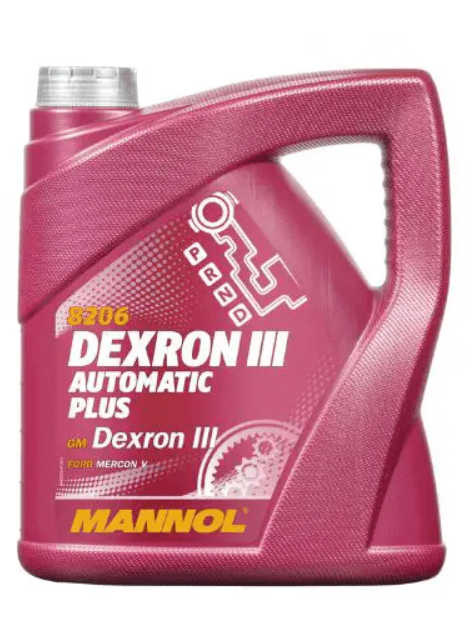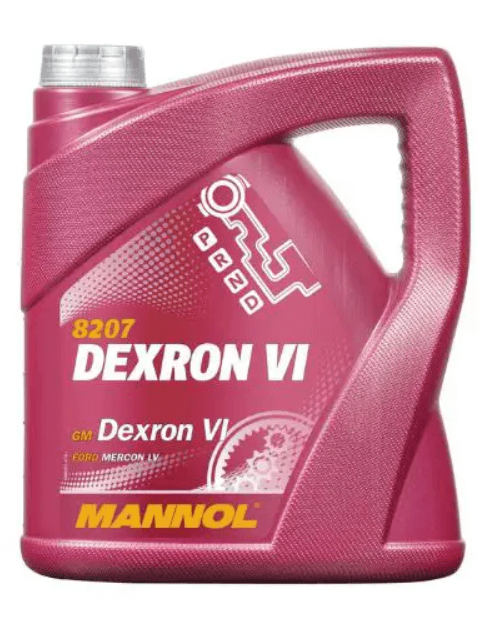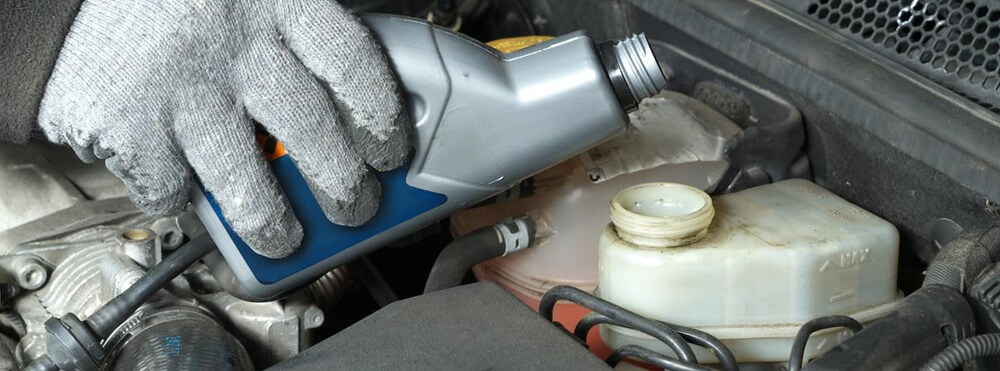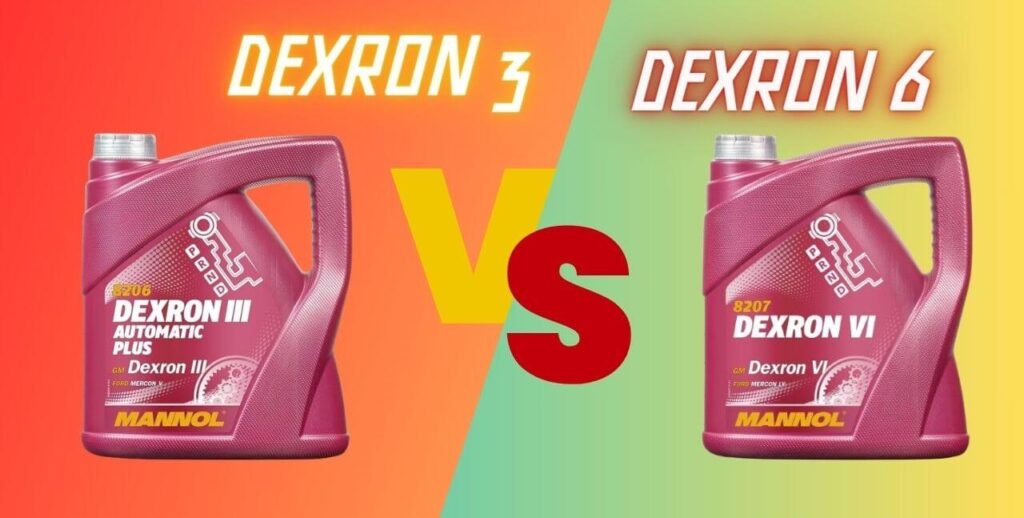If you talk about the renowned companies in the field of automatic transmission fluids (ATFs), two of the companies, Dexron 3 and Dexron 6 are often considered. The demands of transmission fluids grow along with advancements in automotive technologies. The world of automotive fluids is complicated, it is important to know the differences between different standards when it comes to automatic transmission fluids (ATFs).
In this comprehensive guide, we will cover important features such as compatibility, performance, and whether Dexron 6 can replace Dexron 3. We will also discover the benefits of Dexron 6, how well it works with older transmissions, and which vehicle models can benefit from its advanced formulations.
Dexron 6 establishes itself as the latest innovation of the Dextron series and has successfully replaced Dexron 3 and has introduced several innovative features such as oxidation resistance, ability to handle high temperatures, improved frictional properties, and increased fluid lifespan. It’s recommended to check your vehicle’s manual or consult the manufacturer before switching from Dexron 3 to Dexron 6.
Dexron 3: A Legacy in Transmission Fluids:
General Motors (GM) invented a well-known product that has been known as Dexron 3 which has long been a basic requirement in the world of automatic transmission fluids. It was designed in such a way that it fulfills the basic needs of several automatic transmissions, Dexron 3 aims to provide smooth operation, heat resistance, and lubrication.

The ATF gained popularity among vehicle enthusiasts because of its versatility and compatibility with a wide range of transmission systems. Despite its proven significance in the field of the automotive industry, Dexron 3 is considered to be outdated because Dexron 6 has been replaced successfully according to the changing demands of modern transmissions.
Dexron 6: A New Standard
Dexron has released its recent modification of the Dextron series which is Dexron 6 to meet the changes and requirements of today’s technology and automatic transmissions.

Some of the advancements that Dexron 6 includes are better performance at different temperatures, better oxidation stability, and better frictional features. A notable feature of Dexron 6 is its ability to work well with transmissions designed for Dexron 3.
This means if your vehicle initially used Dexron 3, you can smoothly switch to Dexron 6 as a safe replacement making the shift to the newer transmission fluid easy and long-lasting.
Can I Use Dexron 6 Instead of Dexron 3?
Many customers wonder if they can replace the Dexron 3 with Dexron 6. To address this concern for both car owners and mechanics, Dexron 6 introduces a feature called “Backward Compatibility.”
This feature ensures that the switch between both transmission fluids is smooth as they are compatible with each other. It means that if the manufacturer of your car has assigned Dexron 3 for the transmission, you can confidently use Dexron 6 in its place without worrying about compatibility issues.
This feature allows the latest Dexron Series version, Dexron 6, to meet the standards and specifications of Dexron 3, providing the needed lubrication and protection for modern transmissions. It is necessary to keep in mind that the reverse is not recommended, which means that using Dexron 3 instead of Dexron 6 is not advised.
Dexron 6 vs Dexron 3: Checking the Differences
To make a better decision between the two transmission fluids, it’s recommended to compare their features. Some of the features are as follows:
1. Oxidation Stability:
Dexron 6 provides enhanced oxidation resistance compared to Dexron 3. As a result, Dexron 6 has a longer fluid life because it is better able to handle degradation over time. Dexron 3 gives satisfactory oxidation resistance however it doesn’t match the performance of Dexron 6.
2. Frictional Properties:
Dexron 6 has improved frictional properties, leading to a smoother and more efficient transmission. Fuel efficiency and overall transmission performance are improved by the enhanced friction features Dexron 3 gives satisfactory frictional properties, yet it doesn’t reach the same level of effectiveness as Dexron 6.
3. Temperature Control:
Dexron 6 is designed to handle higher temperatures, making it preferable for transmissions exposed to elevated temperatures, such as those used for heavy-duty tasks or towing.
Dexron 3 is designed for regular temperature but in extreme conditions, it may not function as expected. For specific applications, the improved temperature management of Dexron 6 is a major advantage.
4. Fluid Life:
Dexron 6 provides a longer-lasting fluid life because of its improved performance and stability. However the time duration varies depending on several factors, Dexron 6 usually requires fewer fluid changes compared to Dexron 3.

The effectiveness of Dexron 3 is maintained with regular fluid changes. In comparison to Dexron 6, the fluid life can be lower, requiring more frequent maintenance intervals.
Similar Posts:
What Vehicles Use Dexron 6?
Dexron 6 is considered to be the top recommended ATF for modern vehicles, particularly those produced by General Motors (GM). Dexron 6 is a transmission fluid that has been approved by General Motors and is frequently used in Chevrolet, Cadillac, Buick, GMC, and other models. Also, many other vehicle manufacturers consider Dexron 6 for their transmissions.
The usage of Dexron 6 is not limited to a specific vehicle type or brand. It is used by a large number of vehicles, trucks, and SUVs, showing its compatibility with other transmission systems. However, it is important to note that the particular ATF may change according to car models and manufacturers.
Before switching from Dexron 3 to Dexron 6, it is advised to read your vehicle’s manual or contact the manufacturer that suggests ATF for your particular model and according to your requirements. This guarantees that the ATF you are using is compatible with the design and requirements of your transmission.
Conclusion:
If you are choosing between Dexron 3 and Dexron 6 you should look at all important factors such as similarities, maintenance, performance, and the specific needs of your car’s transmission. Dexron 6 is often considered over Dexron 3 due to its high compatibility with various transmission systems.


